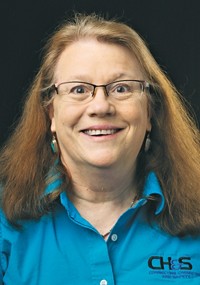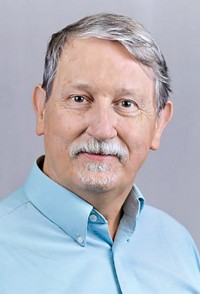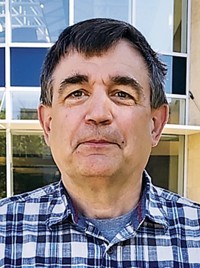Advertisement
Grab your lab coat. Let's get started
Welcome!
Welcome!
Create an account below to get 6 C&EN articles per month, receive newsletters and more - all free.
It seems this is your first time logging in online. Please enter the following information to continue.
As an ACS member you automatically get access to this site. All we need is few more details to create your reading experience.
Not you? Sign in with a different account.
Not you? Sign in with a different account.
ERROR 1
ERROR 1
ERROR 2
ERROR 2
ERROR 2
ERROR 2
ERROR 2
Password and Confirm password must match.
If you have an ACS member number, please enter it here so we can link this account to your membership. (optional)
ERROR 2
ACS values your privacy. By submitting your information, you are gaining access to C&EN and subscribing to our weekly newsletter. We use the information you provide to make your reading experience better, and we will never sell your data to third party members.
Comment
Supporting collaborations for chemical safety
by Bonnie A. Charpentier, ACS President
April 12, 2019
| A version of this story appeared in
Volume 97, Issue 15

The core values of the American Chemical Society include “professionalism, safety, and ethics.” Energy and attention directed to safety have been growing in support of this core value. In 2019, I am happy to support several efforts related to safety, including the second ACS Safety Summit and programming at national meetings. I am fortunate to be able to build on efforts of previous ACS presidents to improve laboratory safety and to look at safety in broader contexts.
In 2018, then–ACS president Peter Dorhout sponsored the first ACS Safety Summit, which involved participants from across the chemical enterprise, including small businesses, national laboratories, government, academia, industry, and nonprofit organizations. He presented the takeaways from that summit in a C&EN Comment last year.
This March, I cosponsored a second ACS Safety Summit with Peter, which was organized by collaborators from the ACS Committees on Chemical Safety, Corporation Associates, Professional Training, and Education; the Divisions of Chemical Health and Safety and Chemical Education; and ACS staff. The focus of the 2019 Safety Summit was chemical safety education. My thanks to all the organizers and participants who shared their expertise and ideas, and especially to Ralph Stuart for providing an early summary of the summit outcomes presented here.
More than 30 participants discussed strategic opportunities for ACS, reviewed outcomes from the previous summit, and focused on four exploratory questions:
▸ What expectations do employers of chemists have for the safety competencies of their chemists?
▸ Which emerging safety knowledge, skills, and attitudes do chemistry educators believe should be included in a 21st-century chemistry education?
▸ What are the differences between safety training and education, and how do they both support the development of required safety competencies?
▸ Within the current chemistry curriculum, how and where are chemists best educated in a safety culture ethos?
From these discussions, three key themes emerged:
▸ Chemical safety instruction is an important opportunity to develop critical thinking, chemical information, and other technical skills that cut across the chemistry discipline.
▸ Safety culture, knowledge, and skills need to be consciously developed and are core to supporting professionalism and collaboration in the 21st-century chemical enterprise.
▸ The development of chemical safety competencies is an ongoing opportunity for all chemists.
Participants also worked in smaller groups to develop strategic plans for six specific opportunities identified. The groups aimed to define the opportunities as specifically as possible, identify stakeholders interested in these opportunities, develop a timeline for when these ideas might be implemented, and identify measurable indicators of progress for these opportunities. The intent was to establish plans that were actionable, were sustainable, and could reach a broad audience.
The opportunities explored were the following:
▸ a rubric for assessing the strength of safety case studies and lessons-learned reports
▸ a user-centered system for dissemination of case studies and lessons-learned reports
a white paper on partnering safety training with education efforts to provide safety instruction for chemists
▸ venues for disseminating information for ACS leaders about the opportunities for professional development available in safety skills and instruction
▸ an “education toolbox” for access to specific chemical safety education resources
▸ a crowdsourced platform for peer sharing of safety insights
In addition to the work described above, a group discussion was held about the broader ethos of a safety culture, including providing safe and inclusive environments that individuals can be comfortable with, and can depend on their colleagues to operate in safely.
Other 2019 collaborations for safety, in a broad context, include national meeting programming. In Orlando, Florida, relevant symposia included the presidential symposia “Bridging the (Safety) Gap between Academia and Industry,” cosponsored by the Division of Chemical Health and Safety (CHAS), Corporation Associates, the Committee on Chemical Safety (CCS), the Division of Chemical Education, the Division of Professional Relations, and the Younger Chemists Committee; and “The Chemistry of Disasters,” focused on hurricanes and floods, cosponsored by CHAS and CCS.
Plans for San Diego include the presidential symposia “Connecting Lab Safety and Green Chemistry Education” and “The Chemistry of Disasters,” focused on wildfires and earthquakes. A symposium titled “Keeping Water Safe” will be sponsored by the Industrial and Engineering Chemistry Division. Many thanks to the collaborative organizers of these symposia.
A strong, positive safety culture is possible only if researchers internalize and own safety. Safety cannot be effectively imposed from outside. One venue to instill a strong safety ethos is symposia at our meetings. I ask symposia and program organizers to consider embedding relevant information and presentations on safety in your sessions. This could be individual presentations or a few minutes within presentations to discuss relevant safety topics for a particular type of chemistry. Please join ACS leadership in strengthening the safety culture for our profession.
As always, I welcome your input on this or any other topic at b.charpentier@acs.org.
Views expressed are those of the author and not necessarily those of C&EN or ACS.





Join the conversation
Contact the reporter
Submit a Letter to the Editor for publication
Engage with us on Twitter